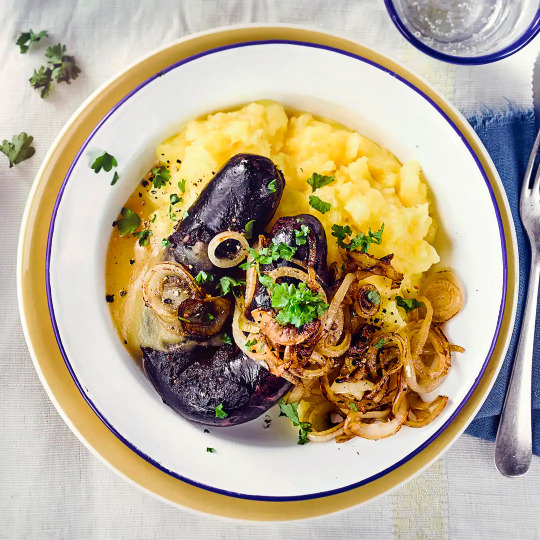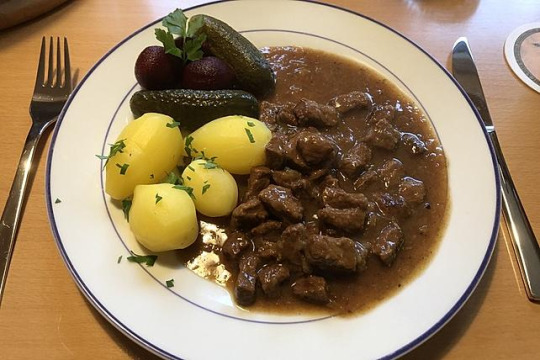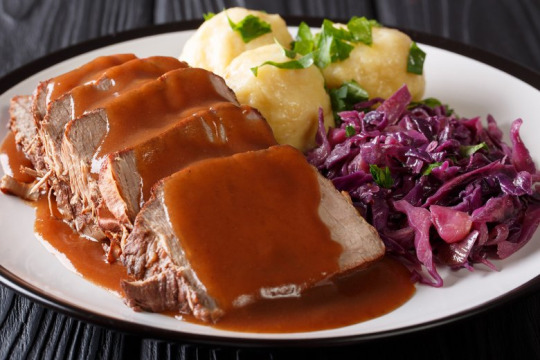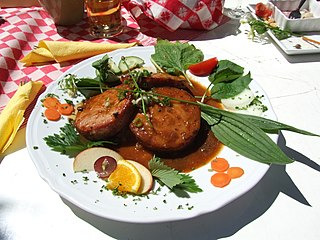Hi I’m Anna my hobbies include, drawing, singing, watching Netflix, and taking up new languages then heartlessly abandoning them. I’m currently a college student majoring in Spanish and Minoring in German. This blog is to gather tips, practice and share things I learn.
Don't wanna be here? Send us removal request.
Text
Some free or inexpensive comprehensible input, audio and video lessons, and listening practice stuff for popular languages because idk I felt like googling some stuff today
Arabic: Yale k-16 interactive reading, Arabic Comprehensible, Egyptic
Bengali: Bangla Shekho, Bengali Fairy Tales
Chinese (Mandarin): Comprehensible Chinese, hackingchinese.com, Acquire Mandarin, Comprehensible Mandarin, Blabla Chinese, Easy Mandarin, Mandarin Click
English: English Comprehensible input for ESL beginners, Dreaming English, EnglishClass101, British Council LearnEnglish, News in Slow English
French: French Comprehensible Input, alice ayel, Easy French, innerfrench.com, Little Talk in Slow French, Francais Authentique
German: DW Learn German, Naturlich German, Comprehensible German, Easy German, Löwenzahn, Deutsch Direkt, Learn German With Falk
Greek (modern): Natural Languages TRPS Greek, Helinka, Hellinic American Union, Easy Greek, Greekpod101
Greek (ancient): Easy Latin (Greek Course), Alpha With Angela (biblical [Kione] Greek), Chihon Teaches, Ancient Greek in Action, Athenaze
Hebrew: The Hebrew Adventure, Free Hebrew (Biblical Hebrew), Hebrew Time, thehebrewcafe.com
Hindi: Comprehensible Hindi, HindiPod101, Hindi TV, Easy Hindi
Hungarian: FluentBox, Magyar Hungarian, Speak Hungarian With Angie, Easy Hungarian,
Icelandic: Icelandic For Foreigners, icelandiconline.com, Ylhyra, Viltu laera islensku,
Italian: Italian For Americans, Easy Italian, Learn Italian With Lucrezia, teacherstefano.com
Japanese: Comprehensible Japanese, DailyJapanese, Akane Japanese Class, iroironanihongo, Japanese Immersion With Asami, Speak Japanese Naturally, Learn Japanese with Tanaka san,
Korean: Comprehensible Input Korean, Korean Patch, Immersion in Korean, Intuit Korean, Learn Korean in Korean, Hello Jadoo, MAVOCA, Storytime in Korean, Talk to Me in 100% Korean
Latin: Easy Latin, ScorpioMartianus, Quomodo Dicitur?, Found In Antiquity, The London Latin Course
Portuguese: Teach Yourself Portuguese, The Sounds of Portuguese, Portuguese With Leo, Easy Portuguese
Russian: Comprehensible Russian, Easy Russian, About Russian in Russian, Russian With Max, Russian from Russia, Real Russian Club
Spanish: Dreaming Spanish, Teacher Catalina. Hola Spanish, Easy Spanish,
2K notes
·
View notes
Text
Duolingo Sucks, Now What?: A Guide
Now that the quality of Duolingo has fallen (even more) due to AI and people are more willing to make the jump here are just some alternative apps and what languages they have:
"I just want an identical experience to DL"
Busuu (Languages: Spanish, Japanese, French, English, German, Dutch, Italian, Portuguese, Chinese, Polish, Turkish, Russian, Arabic, Korean)
"I want a good audio-based app"
Language Transfer (Languages: French, Swahili, Italian, Greek, German, Turkish, Arabic, Spanish, English for Spanish Speakers)
"I want a good audio-based app and money's no object"
Pimsleur (Literally so many languages)
Glossika (Also a lot of languages, but minority languages are free)
*anecdote: I borrowed my brother's Japanese Pimsleur CD as a kid and I still remember how to say the weather is nice over a decade later. You can find the CDs at libraries and "other" places I'm sure.
"I have a pretty neat library card"
Mango (Languages: So many and all endangered/Indigenous courses are free even if you don't have a library that has a partnership with Mango)
"I want SRS flashcards and have an android"
AnkiDroid: (Theoretically all languages, pre-made decks can be found easily)
"I want SRS flashcards and I have an iphone"
AnkiApp: It's almost as good as AnkiDroid and free compared to the official Anki app for iphone
"I don't mind ads and just want to learn Korean"
lingory
"I want an app made for Mandarin that's BETTER than DL and has multiple languages to learn Mandarin in"
ChineseSkill (You can use their older version of the course for free)
"I don't like any of these apps you mentioned already, give me one more"
Bunpo: (Languages: Japanese, Spanish, French, German, Korean, and Mandarin)
76K notes
·
View notes
Text
Blind people gesture (and why that’s kind of a big deal)
People who are blind from birth will gesture when they speak. I always like pointing out this fact when I teach classes on gesture, because it gives us an an interesting perspective on how we learn and use gestures. Until now I’ve mostly cited a 1998 paper from Jana Iverson and Susan Goldin-Meadow that analysed the gestures and speech of young blind people. Not only do blind people gesture, but the frequency and types of gestures they use does not appear to differ greatly from how sighted people gesture. If people learn gesture without ever seeing a gesture (and, most likely, never being shown), then there must be something about learning a language that means you get gestures as a bonus.
Blind people will even gesture when talking to other blind people, and sighted people will gesture when speaking on the phone - so we know that people don’t only gesture when they speak to someone who can see their gestures.
Earlier this year a new paper came out that adds to this story. Şeyda Özçalışkan, Ché Lucero and Susan Goldin-Meadow looked at the gestures of blind speakers of Turkish and English, to see if the *way* they gestured was different to sighted speakers of those languages. Some of the sighted speakers were blindfolded and others left able to see their conversation partner.
Turkish and English were chosen, because it has already been established that speakers of those languages consistently gesture differently when talking about videos of items moving. English speakers will be more likely to show the manner (e.g. ‘rolling’ or bouncing’) and trajectory (e.g. ‘left to right’, ‘downwards’) together in one gesture, and Turkish speakers will show these features as two separate gestures. This reflects the fact that English ‘roll down’ is one verbal clause, while in Turkish the equivalent would be yuvarlanarak iniyor, which translates as two verbs ‘rolling descending’.
Since we know that blind people do gesture, Özçalışkan’s team wanted to figure out if they gestured like other speakers of their language. Did the blind Turkish speakers separate the manner and trajectory of their gestures like their verbs? Did English speakers combine them? Of course, the standard methodology of showing videos wouldn’t work with blind participants, so the researchers built three dimensional models of events for people to feel before they discussed them.
The results showed that blind Turkish speakers gesture like their sighted counterparts, and the same for English speakers. All Turkish speakers gestured significantly differently from all English speakers, regardless of sightedness. This means that these particular gestural patterns are something that’s deeply linked to the grammatical properties of a language, and not something that we learn from looking at other speakers.
References
Jana M. Iverson & Susan Goldin-Meadow. 1998. Why people gesture when they speak. Nature, 396(6708), 228-228.
Şeyda Özçalışkan, Ché Lucero and Susan Goldin-Meadow. 2016. Is Seeing Gesture Necessary to Gesture Like a Native Speaker? Psychological Science 27(5) 737–747.
Asli Ozyurek & Sotaro Kita. 1999. Expressing manner and path in English and Turkish: Differences in speech, gesture, and conceptualization. In Twenty-first Annual Conference of the Cognitive Science Society (pp. 507-512). Erlbaum.
79K notes
·
View notes
Note
If I’m speaking to someone in my class at university, technically my peer, but she is twice my age, would I use usted?
In Spanish mannerisms, is it common to use the usted conjugation for your peer group? Then as you become well acquainted,you eventually transition to the tú form? Trying to gauge social norms with proper grammar. It's easy to offend when learning a language.
It is no longer common to use it that way, no
Bear with me because I'm going to have to explain how things were, and how things are now to make it make complete sense
For the purposes of general modern Spanish, usted is considered polite and formal, and tú considered more common among your peers and people younger than you. You don't usually have to use usted with someone your same age or in your peer group (like a stranger at university)
Sometimes people use usted with their bosses and superiors, regardless of their apparent age... but there are times when someone will say something to the effect of "use tú with me"
It's not a big social faux pas if you address someone about your age or younger with tú. It could be a bit rude to do it to a client/customer/judge/doctor depending on where you are, but it used to be a bigger mistake than it now is
A lot of countries have relaxed the social norms after moving away from a more aristocratic/feudal society... where usted is now a social courtesy for someone in a respected position, but not because they're "better" than you if that makes sense
-
In older Spanish it was more common to use usted with strangers as a courtesy. The roots of the formality/informality are related to title and acquaintanceship; where usted was more commonly used to address someone unknown to the speaker, and its etymology is related to saying "your lordship/ladyship" like saying "sir" or "madam" when speaking to someone
It was common to use this form of address in polite conversation to afford someone the respect that their title afforded them, or in cases of unknowns, it was to treat people with respect so as not to accidentally slight someone's reputation
The tú form was then more commonly used with people who were related to you [a sign of intimacy or kinship], and in older feudal settings, more commonly used with servants and people who were lower than your station
-
These rules have relaxed considerably since most Spanish-speaking countries either have different rules, or they're not so distinctly feudal in nature
In practice, usted is more commonly used for someone older than you; even with strangers, it's more common to use tú with someone who is your age or younger. And it is considered preferable to use usted when speaking with customers and clients
HOWEVER - this will largely depend on the country in question
As an example, I was taught [in the US] that you should talk to doctors and teachers with usted. However, I've been told by Spaniards for example that they use tú with their teachers, and their teachers use tú with them
Argentina is completely unique in that they use vos for everything and that tú and usted are less commonly used now
Some countries in Latin America prefer to use usted even with children or people they know
And many countries have some kind of use of vos which is in some places more informal than tú and vos is used among friends/relations
Chile, for example will use vos among peers and it's considered more common among the younger generation. But I've been told that vos is considered impolite, practically rude, when used with the older generation - sort of like if you called your grandmother "dude"
-
You will find a lot of variation in countries - everyone will understand usted and tú and they're understanding of you being a foreigner and not exactly fitting in with the country's particular social norms regarding formality
Still in a place like Argentina I would expect them to call me vos even if I'm using tú because I never learned the vos conjugation; if I were living/working in Argentina I would go out of my way to learn the vos to fit in better
71 notes
·
View notes
Text
Exspaining Spain
Cuisine
Meal times
The German proverb Iss dein Frühstück wie ein Kaiser, Mittagessen wie ein König und Abendessen wie ein Bettler (Eat your breakfast like an emperor, lunch like a king, and dine like a pauper) sums up the German outlook toward meals.
A typical day begins with Frühstück (breakfast), when people drink coffee, tea, or hot cocoa and eat muesli with yogurt or milk or bread with butter, jam, honey, chocolate and hazelnut spread, sausage, or cheese. Some people also drink juice and eat a boiled egg. This usually takes place between 6 and 8 a.m. Children usually eat a mid-morning snack at school called Pausenbrot (recess sandwich) that consists of a sandwich, a piece of fruit, or a muesli bar. The adult version is called Zwischenmahlzeit (in-between meal).
Mittagessen (lunch) takes place between 12 and 2 p.m. A typical lunch dish includes potato salad with sausage or meatballs and meat with potatoes or vegetables. It is common for family members and friends to gather between 3 and 5 p.m. for Kaffee und Kuchen (coffee and cake).
Abendessen (dinner) is eaten between 6 and 7 p.m. Sometimes it is a light cold meal with bread and cold cuts, in which case it is called Abendbrot (evening bread). Dinner normally consists of a salad or soup, bread, cheese, meat or sausages, mustard, and pickles.
Dishes
German cuisine varies from region to region, and what is considered typically German is actually typical in the south, mainly Bavaria, where cuisine is similar to that in Austria. There are also international varieties such as doner kebab, pizza, sushi, Chinese food, Greek food, Indian food, and Vietnamese food.
Bread and sausage are staples of the German diet. There are about 600 types of bread and almost 1,500 sausage varieties, including Bratwurst (made of ground pork, beef, or veal and spices) and Weißwurst (white sausage eaten with sweet mustard, a pretzel, and beer).
The national alcoholic drink is beer, of which there are many varieties, including Helles (a pale lager beer produced in southern Germany), Radler (a beer mixed with lemonade), and Weizenbier (a top-fermented beer brewed with a large proportion of wheat relative to the amount of malted barley).
Berliner/Krapfen/Pfannkuchen
These sweet dough dumplings, filled with jam and glazed with powdered sugar, are known as Berliner in northern and western Germany, Pfannkuchen in eastern Germany, and Krapfen in southern Germany.

Birnen, Bohnen und Speck
Birnen, Bohnen und Speck (pears, beans, and bacon) is a dish made with pears, green beans, and bacon, accompanied by potatoes. It is eaten in Bremen and Lower Saxony.

Bratkartoffeln
Bratkartoffeln (fried potatoes) are fried potato slices with diced bacon and/or onions.

Brezel
Brezeln (pretzels) are baked pastries made from dough and shaped into a symmetrical knot. They are typically seasoned with salt, but can also have toppings such as cheese or seeds.

Brot
Brot (bread) comes in many different types, from white wheat bread (Weißbrot) to gray (Graubrot) to black (Schwarzbrot), which is actually dark brown rye bread. Some breads contain both wheat and rye flour and are called Mischbrot. Others have seeds such as linseed and sunflower seeds and are wholegrain (Vollkornbrot). Bread can also be made from spelt (Dinkelbrot), rye (Roggenbrot), or a mix of these with wheat.

Brötchen (bread rolls) are also very common and can be made from the same cereals and seeds as normal bread.
Currywurst
Currywurst is Berlin's most famous dish and consists of a pork sausage with ketchup and curry powder.

Eierschecke
Eierschecke, whose name is derived from a tripartite piece of clothing, consists of three layers: the bottom one is either a yeast dough or made with baking soda, the middle layer is a cream made of quark, vanilla, butter, egg, sugar, and milk, and the top one is made from eggs, butter, sugar, and vanilla pudding powder. It is a specialty from Saxony and Thuringia.

Fischbrötchen
A Fischbrötchen (fish bread roll) is a sandwich made with various fish, either pickled or fried, and onions, common in northern Germany.

Flammkuchen
Flammkuchen means "pie baked in the flames" and originates from Baden in Baden-Württemberg and the Palatinate in Rhineland-Palatinate. It is similar to a pizza with thin crust covered with crème fraîche, onions, and lardons.

Frikadellen
Frikadellen are flat-bottomed, pan-fried meatballs of minced meat. They are commonly eaten with pasta salad or potatoes, or in a bread roll with mustard.

Himmel und Erde
Himmel und Erde (heaven and earth) is a dish with mashed potatoes, stewed apples and fried blood pudding. Potatoes are also called Erdäpfel (ground apples), so it is a meal made with apples that grow above and under the earth. It is popular in the Rhineland in Rhineland-Palatinate and North Rhine-Westphalia, Westphalia in North Rhine-Westphalia, and Lower Saxony.

Kirschenmichel
Kirschenmichel is a kind of bread pudding made with cherries and served hot with vanilla sauce. It is typically eaten in Franconia in Bavaria and Thuringia, the Palatinate, Baden-Württemberg, and Hesse.

Klöße/Knödel
These dumplings are known as Klöße in northern, central, and western Germany and Knödel in southern Germany. They are usually made from flour, bread, or potatoes. There are different varieties, including dumplings made of ground liver or breadcrumbs.

Kohlroulade
A Kohlroulade (cabbage roll) consists of cooked cabbage leaves wrapped around a meat filling seasoned with garlic, onion, and spices. Rinderrouladen are similar but consist of bacon and onions wrapped in beef.

Labskaus
Labskaus is a dish made from corned beef, herring, mashed potatoes, and beetroot, served with a fried egg and a pickled cucumber. It is typically eaten in northern Germany.

Leberkäse
Leberkäse ("liver-cheese") is eaten in Franconia, Saarland, and Swabia in Bavaria and Baden-Württemberg. It consists of beef, pork, and bacon that are finely ground and then baked as a loaf in a bread pan. It is served with an egg and mashed potatoes.

Leipziger Allerlei
Leipziger Allerlei was invented in Leipzig and consists of a mixture of peas, carrots, green beans, asparagus, morels, and celery. It may also contain broccoli, cauliflower, or corn. It is served with potatoes and a sauce made from crayfish butter, crayfish tails, and semolina dumplings.

Marmorkuchen
Marmorkuchen (marble cake) has a streaked appearance, achieved by lightly blending light and dark batter. It can be a mixture of vanilla and chocolate.

Maultaschen
Maultaschen ("mouth bags") are large meat-filled dumplings typical of Swabian cuisine. They can also be filled with spinach, onions, and spices and can be either served with broth or cut into slices and fried with eggs.

Pfefferpotthast
Pfefferpotthast (boiled meat pepper pot) is a traditional Westphalian stew made with beef, lard, onions, and spices. It is served with boiled potatoes and salad in the summer and pickled cucumbers and beetroot in the winter.

Pinkel mit Grünkohl
It is a dish made from slowly cooked kale served with Pinkel, a salty sausage eaten mainly in Bremen and Lower Saxony.

Quarkkäulchen
A Quarkkäulchen ("little quark ball") is a Saxon dish made from quark, mashed boiled potatoes, flour, an egg, and lemon peel. The dough is then baked in the form of a pancake and eaten hot with sugar and cinnamon or with fruit, whipped cream, and vanilla ice cream.

Reibekuchen
These potato pancakes are served with black bread, sugar beet syrup, or stewed apples. They are common in many areas of the country, but the name is characteristic to the Rhineland.

Rollmops
Rollmops ("rolled pug/fat young boy") are pickled herring fillets, rolled around a savory filling, usually consisting of onion and a pickle. It is a specialty from Berlin.

Sauerbraten
Sauerbraten is regarded as the national dish of Germany. It originally comes from the Rhineland and consists of large pieces of beef or horse meat, marinated in a spicy water-vinegar mixture before baking and served with Klöße.

Sauerkraut
Sauerkraut is finely cut raw cabbage fermented by lactic acid bacteria.

Saumagen
Saumagen ("sow's stomach") is popular in the Palatinate and consists of a pork's stomach filled with pork, sausage meat, and potatoes. It is usually served with mashed potatoes or Bratkartoffeln and Sauerkraut.

Schnitzel
A Schnitzel is a fried, breaded thin piece of meat, typically pork or beef. Although the most famous one is Wiener Schnitzel (Viennese style), there are other kinds, including Jägerschnitzel, with mushroom sauce; Rahmschnitzel, with cream sauce, and Zigeunerschnitzel, with a sauce made with tomato, bell peppers, and onion.

Schupfnudel
Schupfnudel are thick noodles typical of southern Germany. They are usually made from flour or potatoes and eggs and served with Sauerkraut.

Schwarzsauer
Schwarzsauer ("black sour") is a North German blood soup with spices cooked in vinegar.

Schwarzwälder Kirschtorte
Black forest cake is a chocolate and whipped cream cake with a cherry filling and cherries on top.
Schweinshaxe
Schweinshaxe is a typical Bavarian dish of roasted ham hock served with Sauerkraut. A variation of this dish is known elsewhere as Eisbein ("ice leg"), in which the ham hock is pickled and slightly boiled.
Schwenkbraten
Schwenkbraten is a pork neck steak marinated in spices and onions. It is originally from the Saarland and grilled on a Schwenker, a grill that hangs on a chain over a wood fire.
Spaghettieis
Spaghettieis (spaghetti ice cream) is an ice cream dish made to resemble spaghetti. Vanilla ice cream is extruded through a modified Spätzle press to give it the appearance of spaghetti. It is placed over whipped cream and topped with strawberry sauce to simulate tomato sauce and either coconut flakes, grated almonds, or white chocolate shavings to represent Parmesan cheese.
Spätzle
Spätzle (little sparrow) are hand-made egg noodles, originally from Swabia. They are the main ingredient of several dishes, such as Käsespätzle (Spätzle with cheese) and Linsen mit Spätzle (lentils with Spätzle).
Streuselkuchen
Streuselkuchen ("crumb cake") is made of yeast dough covered with a sweet crumb topping (Streusel). The recipe originated in German Silesia.
45 notes
·
View notes
Text
Resources I'm using to learn ASL!
ASL is American Sign Language and it's a beautiful and complex visual language used primarily by Deaf and Hard of Hearing people. I've been studying it for about 3 months now and have completely fallen in love with it! My roommate and his gf both know varying levels of ASL (she's fluent and he's around my level) so it's been great to practice with them when we're able.
A lot of my language progress has been coming from youtube videos and practicing by myself (especially in a mirror or recording myself) so I wanted to share some of the resources I've found particularly helpful!
HandSpeak ASL Dictionary: This is a great database where you can look up how to sign various words
What The Deaf?! Podcast: A podcast run by two Deaf women talking about various aspects of their lives, gives some insight into Deaf culture and their lived experiences
ASL Fingerspelling Receptive Practice: They show short videos of a fingerspelled word that you then type out to see if you interpreted it correctly. Fingerspelling is a super important skill in ASL so I highly recommend practicing either with sites like this or through other resources meant for receptive practice!
Bill Vicars ASL 1 YouTube Lessons: These are more extended lessons taught entirely through sign while still being largely understandable. I recommend checking these out once you have a little more of a foundation in vocabulary so you can follow along better!
Chris Gorges ASL Basics YouTube Lessons: He gives clear and concise explanations for a lot of different concepts. I went through all of the videos in this playlist which helped me build up my vocabulary quickly
The Daily Moth YouTube Channel: They produce daily news segments signed in ASL with captions, which I’ve found is great for receptive practice and semi-immersion even though they still go quite fast for my current level
I hope some of you find these resources helpful, and it would be awesome if anyone else learning ASL could reply with some other resources you've found beneficial too!
2K notes
·
View notes
Text
Langblr Reactivation Challenge
Hello everyone! As you may know I've created this challenge to help revive the langblr community. It's a three week challenge designed to get you back into learning languages and (hopefully) give you ideas on how to study and share your knowledge of them. It is completely optional to do, but try to reblog other people's posts if you aren't participating.
The challenge is designed to be done daily, however if you miss a day, you can go back and do it later or continue from where you left off. I do encourage you to do your best to keep up with the challenge though. Tag your posts with #langblr reactivation challenge so that others can find your posts.
If you have any questions, please send me an ask or a message and I'll do my best to answer it.
I'll put the prompts under a read more so this post isn't ridiculously long. Good luck to everyone participating! Remember the best way to promote the langblr revival is by reblogging other people's work.
Week 1
Day 1: Create an introduction post about yourself. What's your name? What languages are you studying? What languages do you hope to study? What do you hope you'll get out of this challenge? Add whatever else you’d like to your introduction post!
Day 2: Write a list of goals you have for your target languages. Make both long term and short term goals. An overall goal could be to have the ability to talk with native speakers with ease and a smaller goal would be to finally learn that difficult grammar point that's been plaguing you for ages. How will you achieve them?
Day 3: Create a list or a Mindmap of vocabulary topics. Start with a broad topic and narrow down to more specific topics. An example could be bedroom - furniture - closet - clothes or travelling - languages - study words - school supplies. Keep a hold of this because you'll use it later to create vocab to study. Some broad topics to start with: house, school, work, travelling, friends and family, nature, city. Feel free to use these or think of your own. Share your mindmap so others can get some ideas if they need it. Here are some mind map creation tools (x) (x) (x).
Day 4: Create a vocab list for one of the topics you created yesterday, if you want to make more, feel free to make as many as you like! Share your list and reblog other people's lists. And most importantly, make sure you study these words!
Day 5: Find a video in your target language and watch it as many times as you need to in order to understand it. Make a post about the video. What was it about? Did you like the video? Was it difficult to understand? Make sure you link the video. Try to write your answers in your target language, but if you can’t that’s okay!
Day 6: Look up 3 idioms in your target language and explain what they mean and how you use them in a sentence (with an example!).
Day 7: Send asks to other langblrs (bonus points if it's in a shared target language!) asking them about whatever (for example, ask how their day was, ask questions about their target languages, or share some of your thoughts with them). If you receive one, answer it! You can ask more than one person and it can be on or off anon.
Week 2
Day 1: Over the next week, create a playlist/playlists of songs in your target language(s), they can either have a specific mood or genre or they can be a collection of songs you've discovered. When you feel like you're done with your playlist, share it so others can find some new songs. If you already have a playlist, you can add songs to it and update it.
Day 2: Write an explanation on a grammar rule in your target language (such as verb tenses, exceptions, word order, etc). Include sentences to show how and when it is used.
Day 3: Either make a vocab list or find a vocab list you like and make sentences using those words. You can make them as long or as short as you like. This is a good way to contextualise vocab words and learn them in context. Share your sentences and highlight the vocab word.
Day 4: Record yourself reading an article, short story, or passage (basically anything written in your target language). Listen to it and see if you can point out any areas you can improve with your speaking and any areas that you're doing well. You can post your recording if you wish.
Day 5: Post at least 2 songs that you like in your target language. Make sure you add a link to them so people can go listen to them.
Day 6: Share a study tip you have. This can range from how you organize your notes to playlists that help you study to apps you use to review. Just something that you find makes studying easier (and more fun).
Day 7: Share with everyone some langblrs you enjoy seeing on your dash, try to put at least 5 people (and make sure you @ them!).
Week 3
Day 1: Remember that playlist you made/are making? Take a song you really like and make a vocab list of words you don't understand, learned from the song, or recognize but don't quite remember. Post so others can see and link the song. If you have extra time and/or want a bit more of a challenge, translate the song as well, either into English or another language.
Day 2: Write about a festival or holiday that is celebrated in a country that speaks your target language. This can be either something you’ve celebrated yourself, have wanted to participate in, or have never heard of before. You can write this in any language you’d like.
Day 3: Make another vocab list from the list you made at the beginning of the challenge. If you are learning two or more languages, make the vocab list in 3 languages (meaning for example: French, German, and English or Japanese, Arabic, and Ukrainian).
Day 4: Find a recipe written in your target language and translate it into your native language (or another language of your choice) or find a recipe in your native language and translate it into your target language. Bonus points if you actually make it (share pictures if you do)!
Day 5: Create a collection of resources you use to study/learn your target language. Add links to them if possible so others can also use them.
Day 6: Create a post explaining a grammar rule that you had/are having difficulties learning. If you’re currently having difficulties, do your best to explain and ask others to help you understand it better. Include example sentences in your explanation.
Day 7: How do you feel at the end of this challenge? Did you meet any goals while doing this? Do you feel more confident in your language abilities? Where do you think you'll go from here? Answer these questions either in your native language or your target language.
Hopefully you guys enjoy/enjoyed this challenge. After you've completed the challenge, I encourage you to continue your studies in your target languages and support others in theirs.
737 notes
·
View notes
Text
My top 15 language learning apps 📱
Click here for the full post with links!
(Not in any particular order)
- Busuu: My personal fav, great for learners who like structure, full courses, and stats // Free and paid
- italki: One of the most popular language resources for a reason! Great for learners who want personalized training and speaking practice // Paid (though the community features are free!)
- LingoDeer: Similar to Busuu. Great for Asian language learners, in particular, and those who like structure // Free and paid (mostly paid)
- Pimsleur: 30 minute audio lessons you can take on the go. Great for learners with busy lives or those who prefer audio lessons // Paid
- LingQ: Learning through context and reading. Great for learners who prefer naturally and intuitively learning, rather than strict and structured plans // Free and paid
- Babbel: Similar to Busuu and ideal for learners of one language who like structured plans (each language costs extra!!) // Paid
- Memrise: Started as just a flashcard app and now has proper courses with video and audio! Best for those who like to actively learn lots of vocab // Free with some (unnecessary) paid features
- Language Transfer: Audio lessons with the goal of achieving a deep understanding of the language first and foremost. Best for learners who like intuitive, audio learning // Completely free!!
- Duolingo: You already know this one, I’m sure! Fun, gamified learning, ideal for learners of European languages (not quite comprehensive enough for „complex“ languages compared to English -> eg Chinese, Japanese, etc) // Free! With some paid features, if desired
- Mango: Structured course that is great for beginners! Tons of languages offered (70+!) // Paid
- Speechling: This app focuses on perfecting pronunciation. Ideal for learners of a language with difficult pronunciation in particular // Free and paid
- Beelinguapp: Similar to LingQ. This app focuses on learning with context via reading // Free for one language, paid for 2+ languages and extra features
- HelloTalk: A language exchange app that connects learners of a language with native speakers, all with the goal of helping you teach and learn via their chat // Free, but a paid VIP membership is offered
- Innovative Language Learning: This is the company that created all of the Pod101 and Class101 resources! A very substantial resource with thousands of podcast episodes and videos // Free and paid
- Drops: A vocab learning app with a cute and simple layout // Mostly free with some paid features
+ A bonus (not necessarily language learning specific) app: Google Lens! Great to scan a book you’re reading, or a menu, or a poem, etc. You can then listen to it in your TL or native language and see a translation (per sentence, not word!) // Free!
(Link to the post)
620 notes
·
View notes
Photo




Some more mushrooms. The underside of the yellow-orange-white one has me craving juicy oranges lol…
780 notes
·
View notes
Text

this is so accusatory. those vile children never learned cursive!!! bitch whose responsibility was it to TEACH THEM???
31K notes
·
View notes
Text
I still really want to see a story-driven game that would incorporate language learning into the game mechanic. Starting with singular words and simple sentences, Duolingo-style, with all kinds of minigames where the goal is to either construct a sentence, understand instructions, being able to recall the correct words at the right time, but it's set into a story that you play through.
This could be a whole genre of games, with different locations based on what language you're learning, but the basic format would be pretty similar each time. Your character has been dropped in the middle of a completely new place where they don't speak the language at all, you meet characters who quickly realise that you don't have a way to mutually communicate, and start teaching you as you tag along to whatever they are doing.
There would definitely be a learning curve, but as the characters understand that you don't understand, they start with simple sentences. "My name is Aila. This is my daughter. My daughter's name is Lena. What is your name?", and once you've figured out the very basics, they progressively get more advanced.
Naturally it wouldn't be only grammar tests and vocabulary quizzes, there would definitely be more tasks and more standard game puzzles in it as well, but the instructions you are given are also in the target language. The whole point of having a plot is being immersive, and weaving the learning into the game.
Like the party you are travelling with needs you to get inside a house to fetch a specific item, and you are told - in the target language - what to do, where, and when. "Go in through the second window on the back. The book is in the living room, on the table. There is a dog, do not wake it up." And whether you accomplish the mission is about equally about the challenge of the mission itself, as how well you understand and remember the instructions.
Maybe also quick time events, when you're supposed to say something correctly within a very limited time range, and the fate of your party depends on whether you can quickly pick the right dialogue option. A car is coming and you've got 30 seconds to pick a word or sentence from 3 options, if you well " a car is coming!" they'll have more time to act than if you choose "look out!" and if you either do nothing or choose the completely wrong one and yell "monday!", you lost.
Every once in a while you also overhear dialogue (considering the added difficulty of hearing comprehension, I think the game would need to be largely text-based, or at least have subtitles) or find letters/notes/etc that you don't understand at all, which can work as foreshadowing or worldbuilding - understanding anything out of these wouldn't be vital to progressing the game, but trying to deduce some their meaning on a hunch is rewarded in some way, as an added bonus or easter egg.
Very early on in the game you get the dialogue option of asking "what does _____ mean?", and the characters try to explain it to you, point at it in the environment, or use a notepad to draw what the word means. Every character explains the same word slightly differently, so you can ask every single member of the party the same question if you don't understand the first one.
As the story progresses and the language gets more complicated, you may also notice that different characters have a varied amount of knowledge about the same things, and give a different amount of detail about the same things - if you ask one of them what [word] means, one of them says "it's a gun", while another one will tell you that it's a specific kind of shotgun, and draw you a picture of two shotguns, circling the one that is the specific type.
Considering the nature of language learning, the genre of the game would definitely be mystery - as you start to understand more and more of the language, you also start to pierce together the answers of your own story. Where are you, and how did you end up there? Who even are these people, and what are they trying to do? What are they trying to achieve with these tasks you have been helping them with, and why are they helping you in the first place?
A game like this would definitely have the risk of becoming mentally draining, so there would need to be a lot of in-between breather parts, the option to regularly go explore, craft and do stuff that requires no boring grammar tasks or word memorisation, but which still includes little things in it that keep the learning process fun and rewarding.
Like hey, while exploring this place you found a tin box with two words written on it and a picture of a lemon. You don't know the other word but you know the other one is "tea". You correctly deduce that this is lemon tea. You bring it to the character who mentioned liking tea, and she is delighted. Your friendship meter goes up.
2K notes
·
View notes
Text
New Years Eve Vocabulary (German - English)

der Glücksbringer - lucky charm
das Bleigießen - to pour (molten) lead into cold water and read the future from the shapes that form
das Feuerwerk - firework
die Rakete - rocket
der Böller - firecracker
der Feuerwerkskörper - pyrotechnic article
das vierblättrige Kleeblatt - four-leaf clover
das Schweinchen - little pig
die Biskotte - lady´s finger
der Rauchfangkehrer - chimney sweeper
der Fliegenpilz - fly agaric
das Schwammerl - mushroom
der Elefant - elephant
die Münze - coin
das Hufeisen - horseshoe
der Sekt - sparkling wine
der Donauwalzer - The Blue Danube
das Glockenläuten - bell ringing
die Pummerin - Austrias most famous bell, located in Viennas St. Stephen´s Cathedral
der Tanz - dance
das Musikantenstadl - an Austrian dialect word for cheaply made Alpine folk music and dances in traditional garbs that are broadcasted in TV
das Neujahrskonzert - New Year´s concert
die Erdnusslocken - peanut curls
die Chips - potato crisps
die Soletti - salted pretzel sticks
die Brezel - pretzel
der Liptauer - Liptauer (cheese spread)
das Bier - beer
der Fisch - fish
Frohes Neues Jahr! - Happy New Year!
Guten Rutsch ins Neue Jahr! - Happy New Year!
Prosit Neujahr! - Happy New Year!
Neujahr - New Year´s Day
Silvester - New Year´s Eve
der Vorsatz - resolution
das Jahresende - end of the year
der Jahresbeginn - beginning of the year
der Rückblick - throwback
der Kalender - calendar
der Jahreswechsel - turn of the year
das Schaltjahr - leapyear
die Jahreszahl - date of year
das Jahrzehnt - decade
das Jahrhundert - century
das Jahrtausend - millenium
Mitternacht - midnight
181 notes
·
View notes
Text
Tips to learn new languages pt 3
Hi! I've been teaching foreign languages to children for two years and a half now. Here are more tips I learnt by observing the way my pupils overcome their difficulties :
Repetition is more important than quantity. You'll get much more results by practicing your target language for 10 minutes a day, everyday, than by working 30 minutes every three days.
If you're only beginning to learn a new language, watching movies in your target language may not help you very much. It can be easier to start by learning songs in your target language. Grammatical structures tend to be simpler and choruses are repeated several times, so they're easier to remember. Similarly, a melody helps the brain to retain vocabulary.
Kid books are amazing! When it comes to learning a new language, your brain's a baby. It retains vocabulary better when pictures and humor are involved.
Once you start mastering basic structures and vocabulary, try to find a book that you have already read in your target language. It'll be easier to translate when you already have an idea what you're reading about. It doesn't need to be 100% new for your brain to learn new vocab, grammar rules and conjugation.
Don't start learning multiple languages at the same time. I notice that my kids tend to mix up vocabulary and grammar rules when they do so. Try to reach an A2-B1 level before moving on to learning a new language : it seems that once kids master basic structures fairly well, they don't get confused with new information as much.
500 notes
·
View notes
Text
Mi problems primera es que mid classes de español de universidad cambia donut rabies de costs que yo se, cómo las días del semana y pronombres, a hablando español el todo de clase muy rápidamente. Necesito aprender a hablar, y no puedo.
0 notes
Text
Love how my anxiety can’t decide if I’m actually imagining my symptoms or if I need to start writing my will.
0 notes
Text
i just remembered one time in kindergarten i punched this girl i knew because we were drawing birds and she drew her bird with a human nose and mouth and it pissed me off so badly i went into like berserker mode
it looked like this

238K notes
·
View notes
Text
Ah si, “cacaraldudu” la palabra que los hablantes de inglés usan por el sonido de un gallo. Totalmente.
Leyendo sober linguistics en español es umarmy experiencia. El párrafo sobre cómo los palabras son arbitrarios le dice “No cabe duda que los onomatopeyas tienen cierta relación con la cosa o el fenómeno que designan. En algunas de ellas, la relación es muy evidente. Así comprendemos por qué se dice que el gato *ronronea*, el pollo *pía* o el lobo *aúlla*” podría *tu* comprendes pero yo dijo “¿que diablo es ronronea?”
1 note
·
View note